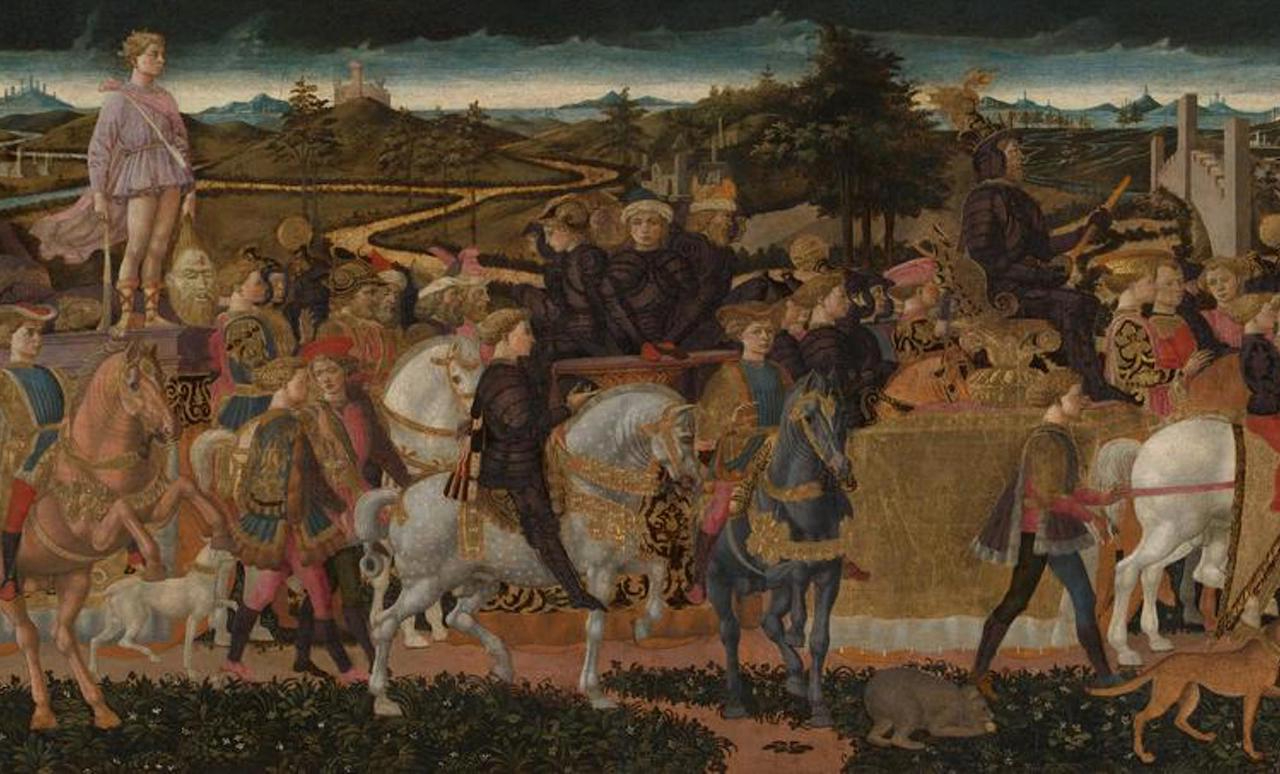Pesellino: A Renaissance Master Revealed at the National Gallery

The National Gallery has opened the first exhibition ever devoted to the 15th-century Florentine painter Francesco di Stefano, known as “Pesellino”, a diminutive of his artist-grandfather’s, “Pesello”, meaning “the pea”. A master of that lush, vibrant quattrocento Florentine style, whose influence reached the likes of Botticelli, Pesellino has been called “the Giorgione of Florence”. At the pinnacle of his career in 1457, Pesellino enjoyed patronage from the Medici family and the papal court. However, fate took a cruel turn, and he succumbed to the plague at the tender age of 35. His work, though limited, is significant, yet his legacy suffered from historical misattributions, obscuring his name from widespread recognition. Now, nearly six centuries posthumous, the National Gallery endeavours to resurrect the memory of this Renaissance maestro.
Dr Laura Llewellyn, Curator of Italian Paintings before 1500, has meticulously arranged this cosy showcase. It houses a mere eight works, yet it pulsates with vigour, chromatic brilliance and artistic prowess. Visitors are welcomed by two striking panels, The Story of David and Goliath and The Triumph of David, both circa 1445-55. These narratives, once adorning a marriage chest or “cassone”, chronicle the biblical sovereign’s saga, with the young David, donning a billowing pink cloak, repeatedly emerging as the narrative progresses, ultimately triumphing with Goliath’s decapitated head in his grasp. Likely from Pesellino’s later period, these pieces showcase his mastery in portraying elaborate stories, ceremonial grandeur and the animal kingdom in its splendour and variety, all embellished with gold dust. Fresh from restoration, the paintings now reveal the meticulous precision Pesellino employed in their creation. The dramatic interplay of Pesellino’s palette is most striking in his depiction of the skies, where the vivacity of the scenes boldly contrasts with the brooding backdrop of white, grey and blue clouds. While these panels once served a practical purpose, their opulence did not intimidate their affluent owners, likely members of the elite Medici household, as suggested by the inclusion of Medici symbols within the narratives.
There is something quite moving about giving Pesellino his first full retrospective in such a tight space, where a single room encapsulates the breadth of his artistic legacy. Known for his miniature masterpieces, Pesellino’s premature death leaves us to ponder the greater heights he might have achieved. In his seminal Lives of the Artists, Giorgio Vasari reflected on this potential, writing, “From what we know of him, if he had lived longer, he would have achieved much more than he did.” The exhibition also features The Pistoia Santa Trinità Altarpiece (1455-60), a significant departure from the segmented narrative of medieval polyptych altarpieces. Pesellino’s vision integrates saints, angels and the Holy Trinity harmoniously into the sweeping hills of the Tuscan landscape. Incomplete at the time of his death, the piece was finished within Filippo Lippi’s workshop, which Pesellino had collaborated with on a predella for Santa Croce’s Novitiate chapel 15 years prior. This altarpiece is notable in the National Gallery’s collection as the earliest “pala”, a term for an altarpiece composed of one principal panel. Miraculously, The Pistoia Santa Trinità Altarpiece has endured despite being sectioned and scattered across Europe in the 18th century. It was painstakingly reacquired and reconstituted by the National Gallery over the first 30 years of the 20th century.
The National Gallery has thoughtfully placed this exhibition in Room 46, a modest yet fitting venue that offers visitors a tranquil setting to engage intimately with the artist’s works. Complementing this visual feast is the first comprehensive, fully illustrated catalogue of Pesellino’s works in English. Admission is free, though they recommend booking a ticket to avoid queues on peak days.
Constance Ayrton
Pesellino: A Renaissance Master Revealed is at the National Gallery from 7th December until 10th March 2024. For further information visit the exhibition’s website here.
























Facebook
Twitter
Instagram
YouTube
RSS